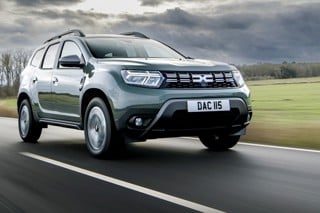On the one hand, no car enthusiast can complain about one of the most beautiful shapes currently on offer, harking back as it does to the early Sixties Alfa 33 sports-racer. On the other hand, will it really shift more Alfa 159 saloons – the real point of the exercise?
The whole issue of ‘halo’ cars is a fraught one. Car companies always hope that one spectacular low-volume model will boost their image, but hard data for this fond belief is hard to come by.
Alfa has tried many times before. In the Nineties, the 155 won the European Touring Car Championship – but without any apparent boost to the mainstream 155 range. The market had decided the 155 was a dog, and no amount of racing victories by something that looked vaguely similar was going to help. A few years previously, Alfa launched the SZ and RZ sportscars to try to encourage interest in its ageing range – again sales of the then-current 75 saw no apparent benefit.
In fact, halo cars do not in themselves breed success – success breeds success. The Honda NSX was so far out of the Honda mainstream that no-one really made a connection between it and the bread-and-butter Civic.
One of the most successful halo models – or rather range of halo models – has been the BMW M3/M5. They embody everything that people want to believe about BMW – but the point is that the lesser models are also good products in their own right, so they are able to use the stardust sprinkled on their shoulders by the M-cars.
If there had been an Alfa 155 GTA as good as an M3, it still would not have helped the base models, as the association would not have been a credible one. Even when a halo car is a success, there are limits to what it can achieve.
Car companies have long accepted that a range should act like a ladder, with buyers encouraged to go up one rung at a time. However, enthusiasm often leads them to ignore this basic tenet of the industry. #AM_ART_SPLIT# The Alfa 8C is three or four rungs above anything else in the Alfa range, so its benefits are likely to be limited.
A much more plausible supercar concept is the Audi R8, as it fits in with the Audi range.
As Audi’s performance image has been given a massive boost by the recent RS4, the company is becoming a credible supplier of performance cars. An Audi V8 supercar, based on the Lamborghini Gallardo for around £65,000, could be a tempting prospect.
Audi already sells cars at that price, it is associated with performance and it has lots of the right parts in stock already.
Halo cars are no doubt inspirational for the people who work on them, but they are often a snare and a delusion. When Ford took over Jaguar, there was a ‘meet the management’ session for the staff. One person asked if there would ever be another XJ220 under Ford, and was told that hell would freeze over first.
Expensive in both money and time, hard to sell and a huge distraction from the main business, the XJ220 had been a huge self-inflicted wound. Unfortunately, other companies are still learning the same lessons the hard way.

The 2007 AM Awards: We are now accepting online entries. This is your chance to be the best in the industry. You have until November 10 to make your voice heard. Click here to enter.


















Login to comment
Comments
No comments have been made yet.